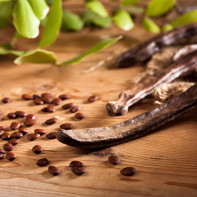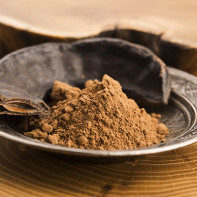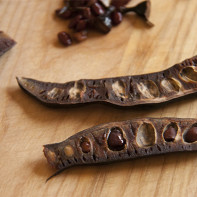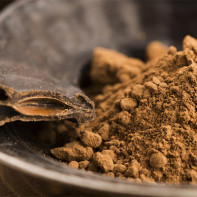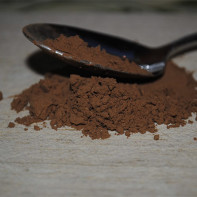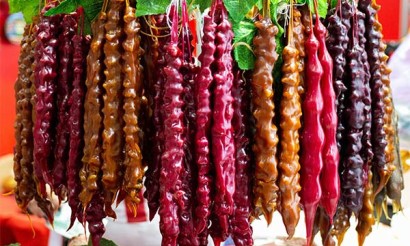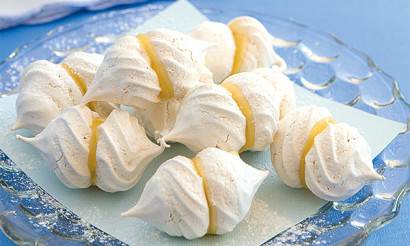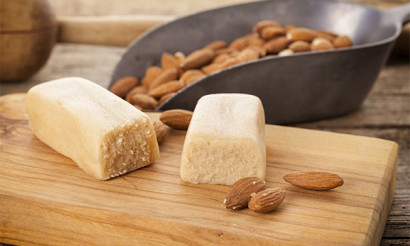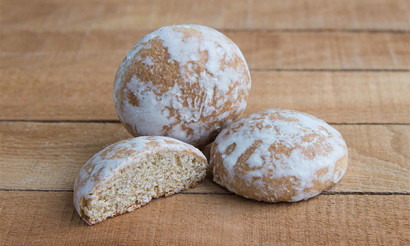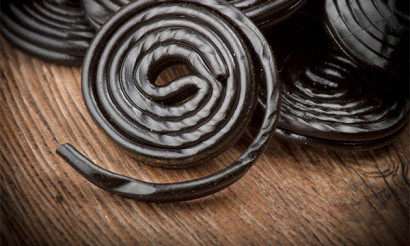Carob (carob tree): useful properties and contraindications
In recent years, an eco-product called carob, which is gradually replacing chocolate products, has become increasingly popular. The vegetable powder is rich in vitamins and contains no harmful neurostimulants, so it fits even into the diet of strict vegans and people who refuse caffeine and energizing additives. But what this product is and where it comes from, many still don't know. Let's take a closer look at its history, useful properties, recipes and possible harm.
- What is carob and where does it grow
- What is the difference between roasted and raw
- Composition and calories
- What's the usefulness of carob
- General benefits
- Pregnancy
- For Children
- Breastfeeding
- Weight Loss
- Carob in Medicine
- Diabetes Mellitus
- In pancreatitis
- For gastritis
- Culinary Uses of Aerobes
- Harms and Contraindications
- How to Choose and Store Carob
- How to use carob
- Tea from the fruit
- Carob syrup
- Oil
- Gum
- How to make chocolate from carob
- A Carob Beverage
- How to cook
- Benefits and Harms
- Interesting facts about carob
What is carob and where does it grow?
The Ceratonia plant has been growing on the shores of the Mediterranean for many thousands of years. It has been known since ancient peoples, being used not only as a flavorful sweet, but also for medicinal purposes for a variety of diseases.
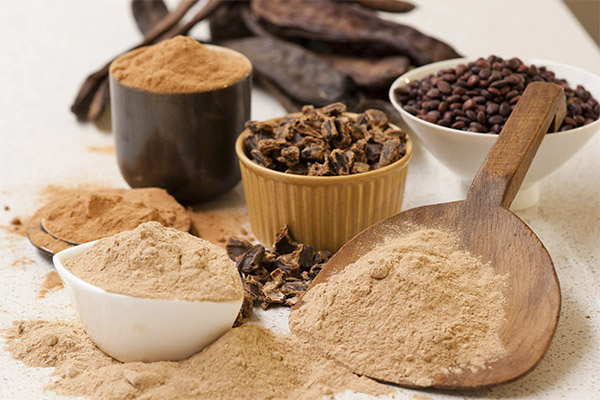
Ceratonia is a perennial tree of the legume family with a life span and fruiting period of up to several hundred years. It reaches 15 meters in height and produces amazing fruits in soft pods filled with coffee-like seeds. The fruit is commonly known as "kerob", or to be more precise, the cooking powder obtained from its processing.
The natural habitat for the "breadfruit of John", as it was later called in Christian countries, was the Mediterranean coast - the countries of Southern Europe and North Africa. It was, however, introduced into Australia and the USA, where it has survived well. Therefore, there today they are also active in the production of sweet powder and other products from the fruit of ceratonia.
In our country, the plant is also known as "carob tree". Many people have heard of the popular thickening agent gum, which has long been central to the production of many food products. And now carob bean powder has also become popular.
The main feature of this product is that it is a decaffeine-free analog of cocoa and coffee, whose flavor reminds us of our favorite products, but at the same time not stressing the nervous system. It is used to make drinks, add it to pastries and desserts, and also for medicinal purposes, which we will tell you more about next.
What is the difference between roasted and raw
The fruits of the plant are processed in several ways, so we get a kind of waste-free production. First of all, the pods are dried to prevent the growth of fungi and fermentation of the product, which contains a lot of sugar. The beans can then be removed from the pods and eaten instead of candy, but more often the product is made into powder.
The beans are roasted or left raw and then ground into flour. Raw powder differs from roasted powder not only in taste and aroma properties, but also in composition. Roasting breaks down some of the sugars and other valuable substances. This is why raw carob is considered healthier.
Lightened carob has a delicate flavor with a nutty hint, a beige-pink color and a pronounced sweetness. Lightly roasted grains give a powder with an aroma of caramel and a slight sourness similar to that of coffee. The product has an ochre color.
The medium roasted beans have a noble bitterness, like dark chocolate, and a brown color, similar to cocoa powder. The longer the beans are cooked, the less sweet they become. At the same time, the product retains its antioxidant and other beneficial properties.
In addition to powder, the pods are made into a thick syrup, an equally popular product in the Eastern and now Western markets. It is prepared by evaporating an infusion of water from the capsules (without kernels). The composition of the products has a lot in common, but there are also differences. Therefore, we will discuss the properties of ceratonia bean powder in more detail.
Composition and calories
One of the great advantages of the product is its natural sweetness, which allows you not to add sugar to dishes with carob, and low calories. Carob contains about 220 kcal per 100 grams of powder, which is about half as much as cocoa. Such a mark is due to the low content of natural fats in the product. It contains only oleic and linolenic fatty acids, which the body needs.
Approximately 50% of the structure consists of carbohydrates, among which are glucose and fructose as well as pectin, tannins, about 40 g of dietary fibers, 4.5 g of protein and up to 1 g of fat.
It is rich in minerals and vitamins: B1, B2, B6, E, PP, sodium, potassium, phosphorus, iron, manganese, zinc and magnesium. This product contains three times more calcium than cocoa powder, besides it has no cholesterol and its components are very well assimilated by the body.
Another important fact is that the powder contains no caffeine and theobromine, which are neurostimulants that are addictive in the human body.
Due to its composition, it is possible to introduce it to the children's food, as well as in case of diseases of the digestive and nervous system.
What is useful for you
The most important valuable properties of the powder can be considered the presence of antioxidant properties and safety for the nervous system. But, in addition, it can provide the body with support and help with a number of other ailments.
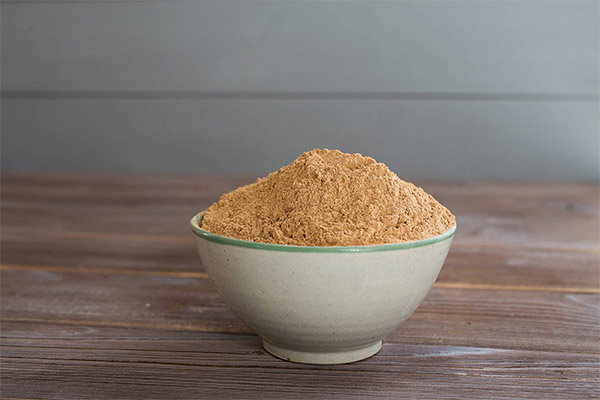
General benefits
- Anti-cough and expectorant effect in colds and bronchitis. The remedy is even introduced in medicinal syrups to enhance their action.
- Carob includes an increased content of fiber, which helps to reduce hunger and prolong the feeling of satiety, removing from the body all unnecessary - toxins, excess water.
- Rapid rise in sugar levels. Carob contributes to a rapid improvement of well-being in cases of hunger attacks and associated malaise.
- Consumption of sweet powder helps to reduce cholesterol levels, purify the blood, normalize blood pressure and heart rhythm. The product can be introduced into the diet of hypertensive patients.
- Relieve swelling and malaise after long workouts, with colds.
- Quality assimilation of calcium, strengthening the skeleton, the normalization of blood composition.
- Prevention of cancer.
- Fighting aging due to antioxidants, speeding up metabolic processes in cells.
- Normalization of sleep and mood. Carob will help get rid of coffee or chocolate addiction, restore the regime and normal health.
- Help in raising male strength, stimulation of potency and prevention of prostate diseases.
- Beneficial effect on skin condition. The product helps to remove traces of fatigue, to give a fresh appearance.
A drink with carob or adding it to food helps to rejuvenate and cleanse the body from accumulated poisons, restore normal nervous activity and normalize BP.
Ceratonia products are not addictive and can be consumed at night, in children and the elderly, as well as during pregnancy. At the same time cearab does not require heat treatment and is safe for the body in its raw form.
When pregnant
Women in the position of using carob in the menu is definitely possible, especially when it is necessary to limit the consumption of coffee and cocoa. It is important to make sure that there are no allergies to the product. Dishes with the addition of carob and "chocolate" drinks will help to normalize water metabolism and avoid edema, prevent constipation, saturate the body with B and E vitamins, useful for the proper formation of the fetus, as well as stabilize sleep and mood.
Before introducing a new product to the diet, it is advisable to consult a doctor and take into account all the individual characteristics of the body.
For children
In the diet of children, carob can partially replace chocolate products, which will give an opportunity to protect the liver and nervous system of the child. In addition, the high calcium content will contribute to the development of the body, normal growth and vigor of the baby. Carob will help maintain a healthy blood count, as well as help with digestion. The natural sweetness will help to give up excess sugar in the diet and keep the teeth healthy.
It is recommended to introduce the product little by little, since legumes, especially exotic ones, often cause allergic reactions in the unaccustomed body. The first introduction should take place after 2-3 years. Small pinches of powder can be introduced in fruit puree, cereal, cottage cheese. It is recommended to offer your child a delicious drink as a warm and cold.
At the same time, doctors do not recommend getting too carried away with such a drink, so as not to exceed the required sugar levels, as well as not to inhibit the development process. The fact is that the fruits of carob contain substances that, in large quantities, can inhibit the metabolic processes of the cells. 1-2 glasses per day (1 tsp. in 250 ml of water) should be enough, while it is desirable not to offer a child such a drink constantly.
When breastfeeding
During lactation, the use of carob is useful because of the calcium and other minerals it contains. These ingredients improve the composition of milk and contribute to the normal development of the baby. Specialists recommend refusing tea and coffee during the nursing period, so you can try to replace your favorite drinks with the new "chocolate" drink.
The only caveat is the possibility of allergies. Therefore, it is necessary to strictly monitor both your well-being and the reactions in the body of the child and stop drinking carob if the baby has a rash, fever or bloating.
When losing weight
There is no unequivocal answer to the question whether you can drink sugar beverage when losing weight. On the one hand, the drink normalizes metabolism, helps to satisfy hunger and indulge in something less fatty than chocolate products. On the other hand, the powder is rich in carbohydrates, including sugars, so it is definitely not worth getting involved in a diet.
If you have reduced sugar intake from other sources, you can drink 1-2 cups of a drink with carob a day or add a couple of spoonfuls of powder to your favorite dishes to improve their flavor.
Many modern nutritionists are beginning to include carob in weight loss programs to control appetite, and recommend it along with honey as a substitute for regular sugar in familiar dishes.
It is useful to replace coffee with carob, because when fasting and rebuilding the body in a new way during weight loss nerves are usually very tense, and coffee only further "drives" the nervous system into a state of exhaustion. And a mixture of carob with diet milk and other goodies will help with the benefit of restoring the balance without harming the figure.
Carob in medicine
The supplement is considered beneficial and dietary, but today you can buy it only in specialized stores of proper nutrition or tea stores, as well as through online stores. Nevertheless, in official medicine, carob is not used as a medicine. Gum is often used as a thickening agent, and carob syrup is used to treat nausea, coughs and poisonings or intestinal disorders.

In Diabetes Mellitus.
There are several diagnoses in which you need to be careful about eating carob products. For example, if you have diabetes, you should not eat or drink a lot of carob because of its property of raising blood sugar levels. Nevertheless, the product will be an excellent natural alternative to regular sugar.
Experts recommend adding the sweet powder to baked goods and desserts, replacing sugar and fatty chocolate at once. In moderation, carob is normally tolerated by the body, easing the internal burden. But in severe cases, it is necessary to consult a doctor before consuming the product.
Important: The glycemic index of carob is 40 units.
For pancreatitis
Pancreatic inflammation does not tolerate sweet and fatty foods, so in the acute stages, you can neither eat nor drink carob. But during the "lull" this very bean powder will be an excellent substitute for heavier cocoa and coffee. It is recommended to drink it warm. The plant product has healing, anti-inflammatory and cleansing effects. In case of allergies, you will have to give up drinking it.
With gastritis
With mild forms of gastric irritation, carob is a good choice instead of coffee and chocolate, which significantly increase the acidity of the gastrointestinal tract. If you brew a warm drink with milk, it will contribute to the normalization of digestion, alleviate unpleasant symptoms and give strength. In such cases, do not add carob to baked goods and other dishes with a coarse dry texture, contraindicated when diagnosed with gastritis.
Culinary uses of carob
In the kitchen, carob products are used widely - as a thickener, sweetener, and substitute for cocoa powder. Pectin-rich syrup is used to gell jams, thicken compotes, and as a topping for pastries, dairy desserts and fruits.
The same goes for the powder. It is sprinkled on cold desserts, fruit salads, added to dough, creams, fillings, drinks, porridges. Because of its high sweetness, the product is only used in confectionery. Its tangy flavors allow for several completely different food additions at once, from a fresh nutty "flavor enhancer" to chocolate caramel and coffee bitters.
Because the product does not spoil for a long time, it is easy to store and use all year round, including in production, packed in foil pouches.
Carob bean gum is a common additive in many processed foods such as yogurt, processed cheese, chocolate, and others. It is one of the safe "E-cups" and even has positive effects in the form of antioxidant and normalizing effects.
In southern countries the carob beans themselves are also consumed. They are simply peeled from the pods and dried, and then eat the sweet grains as marmalade.
Due to the large amount of tannins and antibacterial substances in carob and other carob products, it is a good natural preservative. Adding carob powder to various dishes extends their shelf life a bit.
Harms and contraindications
Specialists have not found any harmful effects of carob on the body. The only thing to watch out for is allergies, overdose, and poisoning. Therefore, always keep the product fresh, eat it only in small portions and pay attention to how your body reacts. Particular caution should be observed by people who have already discovered an allergy to other legumes - soybeans, peanuts and chickpeas.
Signs of allergy may include:
- fever, swollen lymph nodes, lacrimation;
- Intestinal discomfort, bloating, diarrhea;
- skin rash and itching;
- palpitations and general malaise.
In addition, all carriers of complex diagnoses such as cholecystitis, pancreatitis, diabetes, and urolithiasis should check with their doctor for their particular case, whether it is possible to consume carob.
How to Choose and Store Carob
Given that the product in our windows is still rare, you need to choose it carefully. It is possible to find carob powder:
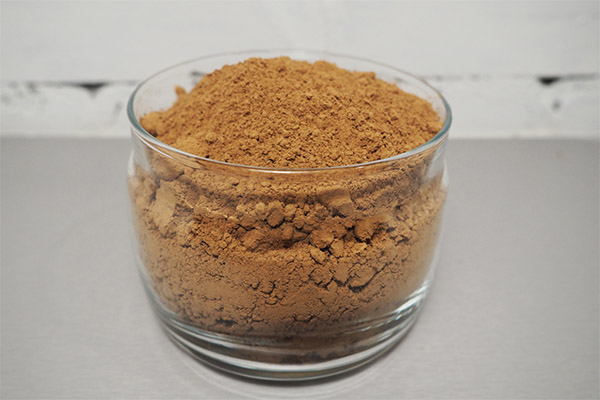
- In stores of sports supplements and healthy food.
- Specialized coffee and tea shops and stalls.
- Large markets with a lot of imported products, you should look for them in the dietary sections or grocery stores.
- Internet stores, and you can find a middleman with a good price or order directly from the manufacturer if he offers a retail shipment of goods. In such cases, you usually have to wait longer, but the product is sure not to be counterfeit.
Buyers with experience remind you that you should read the reviews about the seller and the brand of the product, so as not to buy a low-grade or unnatural product. It is worth paying attention to the country of manufacture, the "native" brands from Spain, Portugal, Cyprus, Turkey, as well as Australia and the United States are considered good.
Powder should be well packaged and not sold by weight, as this directly affects its shelf life, flavor and nutritional qualities. If you are buying the product for the first time or trying a new manufacturer, bet on a small volume. A standard packet of carob powder usually holds 200 g, but you can also look for "samples".
The powder should look uniform, evenly colored, dry and without lumps. Fragrant powders are usually packed in foil containers. The bag should always be labeled with an expiration date, the country of manufacture and quality marks.
The price can be oriented about this: 100 g of light product will cost about 100 rubles, and the toasted powder - a quarter cheaper. You can also buy whole dry pods, so the beans will last longer, but we do not sell the product in its natural form.
Store ready-made powder or pods in an open bag can not, you must pour them into a glass jar and close the lid to prevent air and premature oxidation. The vessel is placed in a dark cool place. The powder is stored for about a year. And fresh pods in the refrigerator can be stored for up to 3 years without losing their properties.
How to use carob beans
Ceratonia is an amazing plant whose fruit is used in many different ways. The beans are ground into a cocoa-like powder, the pods are boiled into syrup, and it is also used to make a safe and useful thickener (carob gum) and oil. All of these products are almost indispensable in food production today, making carob a promising and sought-after plant for our future.
Tea from the fruit
Sometimes drinks are not made from dry powder, but from whole fresh carob fruits, because their pulp is rich in sugar, nutrients and juice.
To make a drink, the carob is crushed and poured over with boiling water, then infused for about 25 minutes under a lid. Such a drink is invigorating in the morning and helps the body wake up.
Bugle syrup
To get a delicious topping, the pods are freed from the beans, poured with hot water and slowly boiled until thickened. Interestingly, such a mass was originally prepared not as a dessert additive, but as a medicinal.
Syrup in many southern countries is commonly given to children for coughs and intestinal disorders. The liquid is rich in pectin and tannins, thanks to which it quickly adsorbs excess fluid, removes toxins from the body and helps to thin sputum.
Today this syrup is also popular in cooking. It is often added instead of sugar to smoothies and cocktails, in fruit salads and ice cream, in porridge, to pancakes and homemade waffles. But there is one caveat. Experts do not recommend combining carob syrup with dairy products. We are talking about products of animal origin. Milk can always be replaced with vegetable milk - almond or soy. In this case, you can safely combine the powdered cocarob with milk.
Oil
Since it is difficult to obtain oil from these beans, it is considered a rare and valuable product, which can hardly be found in our country. In European countries this extract is used exclusively for medicinal purposes to improve the cardiovascular system as well as for general immunity strengthening in case of long-term illnesses.
Gum
This valuable thickener is obtained from the inner part of the ceratonia bean. Its distinctive feature is the ability to slow down the formation of ice crystals and make the product jelly-like. That is why this additive is used in the production of ice cream, dairy desserts, fruit and vegetable preserves, cheese pastes, all kinds of sauces and mousses.
The plant-based product is completely safe, moreover, has an antioxidant effect, making canned foods less harmful to the body.
How to make chocolate from carob
Even a bar like a chocolate bar can be made from carob powder. You need a few basic ingredients: oil (butter or vegetable oil, most often coconut oil), dried carob, and the necessary additives. These additives can be candied fruit, nuts, coconut, mint, bits of cookie or waffle, milk, or even honey. It is usually added for flavor, choosing the fragrant lime variety. But you have to remember that the powder is sweet on its own, so don't overdo the addition of honey.
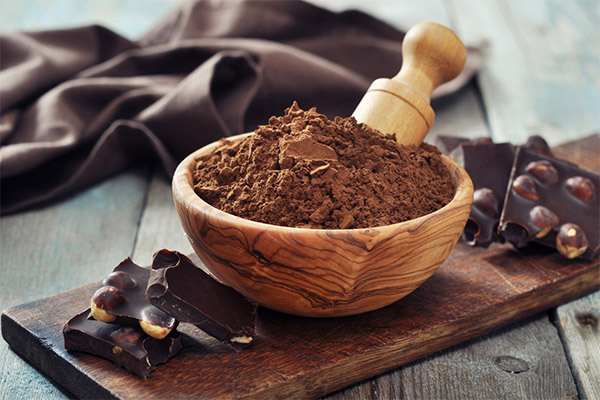
You can also add starch to the bar, this component is introduced for strength, but it is not necessary.
The butter, carob and the filler are taken in equal proportions, and the milk is guided by the desired degree of "darkness" of the chocolate. The butter is heated until liquid, the sifted cube is gently added, stirring to prevent lumps from forming, and then the milk is poured in. Then all the necessary ingredients are added evenly and the chocolate is poured into molds. The cooled dish is sent to the refrigerator for 60 minutes, after which it can be served with tea and any other treats.
Interestingly, in the same way you can make candy. To do this, prepare a basic glaze and, while it is warm, dip the components prepared in advance into it:
- washed and soaked dried fruits - apricots, prunes, dates;
- fresh or frozen berries or fruits: cherries, mango, banana, blueberries;
- Biscuit pieces or cereal balls "crisps
- whole nuts;
- fondant or marzipan balls and any other ingredients you like.
Glazed candies are placed on parchment and refrigerated for an hour, just like chocolate bars.
The benefits of this chocolate
Unlike the original recipe with cocoa, such sweets are not addictive and addictive, get less fatty and have a piquant and unique flavor notes. Such chocolate strengthens the musculoskeletal system, protects the nervous system and liver, can be consumed at any time of day, in addition, it is rich in fiber, which is beneficial for the digestive system.
A Carob Beverage
More often than not, carob bean powder is used as the basis for a cocoa drink. It can be made with animal milk as well as plant-based substitutes - almond, soy, and coconut. The flavors combine well and make the drink flavorful and unusual. You can also make a fragrant drink on water, it will be quite rich in flavor.
In addition, from the carob make tea by crushing the pulp of the pods and infusing it in warm water. You can mix the bean powder with a cereal drink on chicory. Then it will be more like coffee. Spices - cloves, cinnamon, vanilla, and even cardamom - are added to the drink to give an unusual flavor.
How to cook
Recipe 1. The simplest drink made from carob is prepared as follows: 1 spoon of powder is diluted in a glass of warm water. The raw material quickly dissolves, after which the drink is ready to drink. Such a composition is recommended for the prevention of colds and impotence, digestive problems and sleep disorders.
Recipe 2. A coffee substitute made from carob is prepared in a turkey: 200-300 ml of water is heated, add 1.5-2 spoons of dark (toasted) carob, spices if necessary. Next, watch for the rise of the foam. As soon as it runs out, remove the mortar from the fire and let the drink settle. Repeat this process three times, after which the drink can be considered ready.
Recipe 3. "Hot chocolate" made with carob is a little more complicated. First you need to boil 2 cups of milk, add a pinch of vanilla and 2 spoons of powder of the main ingredient. Stir everything carefully to avoid lumps, and keep on low heat for 3-6 minutes.
The main thing is not to leave the dairy drinks warm for a long time, and in general, such drinks are not stored for a long time and are prepared fresh each time. The main thing is not to leave milk drinks in the heat for a long time, and in general such drinks are not stored, and every time a fresh portion is prepared.
The benefits and harms
Drinks based on carob do not disrupt sleep, contribute to maintaining normal acidity, unlike coffee products, are useful for the stomach, have a softening effect, do not cause a strong diuretic effect, and are also safe for the cardiovascular system.
Regular use of such mixtures during a cold will help to cope with cough and runny nose, relieve irritation and redness, as well as quickly remove viruses from the body. Drinks for children are useful for growth, and for the elderly - to restore normal digestion.
Do not get carried away drinking from carob on a diet and in diabetes. But moderate consumption can even help to set the metabolism, alleviate the condition and contribute to the renewal of the body.
Interesting facts about Carob
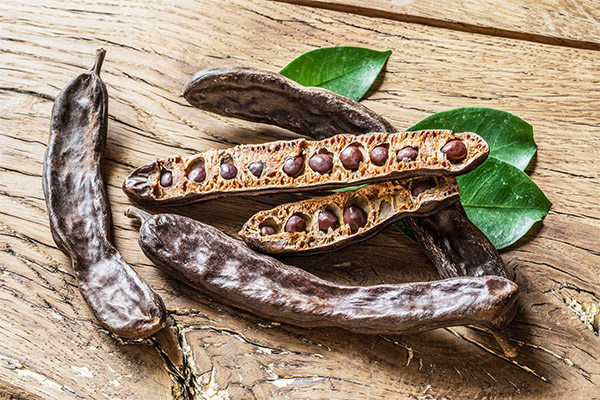
- Mentions of this amazing plant are in the ancient Greeks and Egyptians. The beans were then used to treat colic, poisoning and coughs.
- The tarantula trees can live for 200-300 years, and consistently bring crops even in the dry season. This is why the crop was imported to Australia for the purpose of raising the agro-industrial fund.
- The fat content of carob is 10-11 times lower than that of cocoa powder, and the calcium content is three times higher. At the same time, the product has its own sweetness, which makes it more advantageous on the kitchen shelf of every host or hostess.
- According to weather forecasters and agrarians, cocoa beans are gradually dying out due to the drastic climate change, while ceratonia feels fine even in the heat. Experts believe that in the near future the carob bean will replace cocoa in mass consumption.
- In the ancient world, these beans were valued for their ideal shape and precise weight. Carob beans were used to measure the weight of spices and even precious metals. The word "carat", still used by jewelers and pharmacists to this day, comes from the name of the carob plant.
- It is harvested annually from one tree up to 200 kilograms of succulent fruits.
- In the Mediterranean, carob bean extract has been used to brew liqueurs and other spirits for centuries.
- Cypriots usually feed the sweet beans to domestic animals, because in their homeland the plant is always fruitful in abundance, and the useful fruit simply has nowhere to go.
This useful and unique product, about which we still know little, probably soon will be loved by everyone and become a staple. In the meantime, choose healthy foods and try new things!
«Important: All information on this site is provided for informational purposes only. for informational purposes only. Please consult with your health care professional before using any of the recommendations. specialist before using any of the recommendations. Neither the editors nor the authors shall be liable for any possible harm caused by materials."

